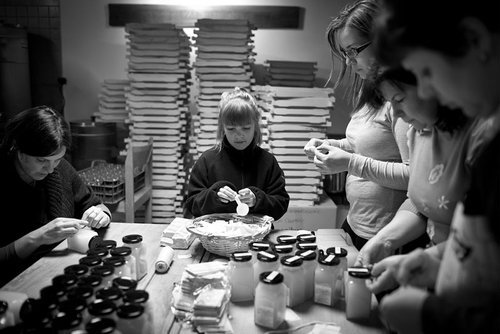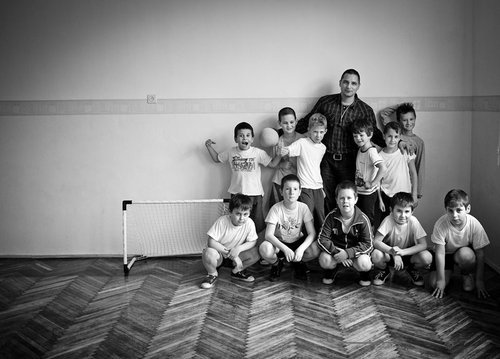How Hungarian congregations struggle with hopelessness and misery
Christians never fight for causes which are completely lost, since with their faith in God they can change the world. This story is about the creativity of a community surrounded by hopelessness in Northeastern Hungary.
The weather is foggy in the morning in this area. Bleak. The sky couldn't be any greyer. Cold wind coming from the Zemplén Mountains sweeps through the plain. Drizzling rain and shower.
There are dirty puddles in the potholes of the main street. In these villages above the county's capital, Miskolc, the elderly don't stay outside long. A bit further to the north is the Slovakian border.
The rain is like a backdrop for the overwhelming depression in these ribbon-built villages: abandoned taverns with bars on their doors. Broken windows with boards over them. The red color of a freshly painted house is like a surreal ray of hope.

The prosperity of Europe, which can be witnessed in the shopping centers and art novueau palaces of big Hungarian cities, never arrived here. On the contrary: the agriculture, which was the country's economic base for over 1,000 years, could not survive the shift into a market economy after the transition. The Hungarians drink milk imported from Austria.
There is no support for the industries to settle down in the region. The nearest pediatrician is 70 kilometers away. The young people would rather move to nearby towns, so only the elderly and Roma families stay here. The misery in these ghettos is much worse than words can describe. Laundry hangs in crowded lines on the drying-lines, neglected children play among vacant ruins, which used to be houses once.
In the middle of this hopelessness Rev. Levente Sohajda opens the gate of the congregational clergy house, where after entering we can see a well-settled yard. There are polished wooden tables at the front where during the week religious education lessons take place. In the back we see huge illuminated shelves packed with groceries, ready for dispatch: honey first of all, but we also find walnut, roasted pumpkin seeds and honey cakes.
The farm is an apiary (bee yard), which belongs to the reformed congregation of Göncruszka. From the former 350 members there are still 67 today, who are all elderly, apart from the pastor's family. Forty-five members help in the apiary as well, among others the 88-year old Uroma, who lives on her own. She breaks the walnuts open and that means a lot to her. Through this she can be a part of the village's hope, Sohajda shares with us.
In a short time, the pastor, motivated by the reformed sense of mission, started to move mountains with vigor. The bee yard operates under the self-founded GR protest Nonprofit Company. Their products, particularly their specialty the cold-extracted acacia honey, are exported to more countries.

The income enabled the congregation to reopen their village school called Talentum. With this, a more than 100-year old tradition was brought back: up until WWII there had been more than 1,000 schools run by the Reformed Church in Hungary. During the time of the communism, only one of was left, and today their number is around 140.
Modern Dutch pedagogic principles are applied in the children’s education in Göncruzska - which ironically are rooted in times before the World War – laying a great importance on foreign languages and music. Fifteen children belong to each year: 5 from Hungarian families, 5 orphans or fostered children and 5 from Roma families. There are common meals three times a day. It’s not really about the meals but about the community, the pastor says.
In this area of Hungary, Roma-mission is one of the biggest challenges the society has to face. Curator (representative) Gergely Molnár from the neighbor congregation in Vizsoly informs us: “In the nursery school 98% of the children are Roma, while in the primary school this proportion is 85%. It’s only possible for a child to break out of the poverty the Roma live in. That’s where our responsibility lies, that’s where God has sent us.” Molnár has succeeded in giving his family a future perspective. On the edge of the Roma neighborhood stands his own apiary, the products of which are sold to tourists visiting Vizsoly. The young curator is also a visionary with great faith in the Lord. It feels almost surreal as he stands next to the grey and partly abandoned congregational building near the church and tells about the ambitious future plans of this small congregation (45 members). A visitor center could be built here with a museum and a bookstore, and its income could help the Roma mission as in Göncruszka. For a long time now they have put a lot of efforts into organizing Bible weeks for the children where they offer community meals as well. “Many of the children who participate don’t have breakfast at all,” shares Molnár. He has also set an example for the Hungarian society about how hope can prevail among such bad conditions: the reformed community wanted to plant 400 trees in the village with the population of 1000 people, where they are just a small minority besides the Catholics and atheists.

In the end, the number of the trees planted in the whole neighborhood was 8,000 thanks to a TV report and the help of the Jimmy Carter Foundation among many others. “One shouldn’t always talk about money and poverty, we should also give the people something wholeheartedly,” the optimistic curator expressed. There is no doubt that this man will open a spotless visitor’s center here someday.
In the stories of these two Northern Hungarian villages, a bitter ecumenical reality is hidden as well. The nearby Catholic priest, who represents the majority denomination in this area, is way too busy reading prayers at mass. Like this, there is hardly any time left for congregational involvement.
Faith and life belong especially together in the reformed theology, as the pastor Levente in Göncruzska has experienced in the past year, certainly not voluntarily. In minus 28 degree weather on Sunday morning, the little congregation moves from the service held in the church to the apiary house. It is also noteworthy that they could bear it in the church last week when it was minus 19 degrees. “That’s nothing special,” Levente assures us, “we are used to overcoming obstacles here.”
Written by Thomas Greif; translated by Anita Polgári
originally published on Sonntagsblatt